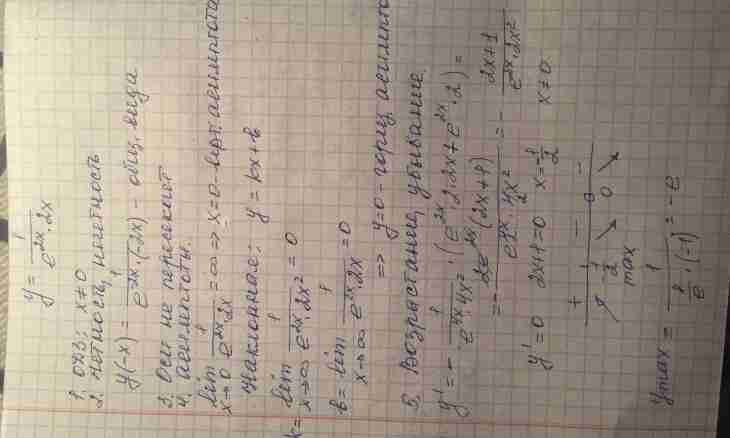Function graph asymptote at =f(x) is called the straight line which schedule beyond all bounds comes to a function graph during unlimited removal of any point of M (x, y), the belonging f(x) on infinity (positive or negative), never crossing a function graph. Removal of a point on infinity implies also a case when only the ordinate or an abscissa at =f(x) strives for infinity. Distinguish vertical, horizontal and inclined asymptotes.
It is required to you
- - paper;
- - handle;
- - ruler.
Instruction
1. In practice the vertical asymptotes are found absolutely simply. These are points of zero denominator functions f (x). The vertical asymptote is a vertical straight line. Its equation x=a. I.e. at x aspiring to a (on the right or at the left), function strives for infinity (positive or negative).
2. The horizontal asymptote is horizontal direct y=A which the function graph beyond all bounds approaches at aspiration x infinity (to positive or is negative) (see fig. 1), i.e.
3. Inclined asymptotes find a little more difficult. Their definition remains the same, but they are set by y=kx+b straight line equation. The distance from an asymptote to a function graph here, according to figure 1 makes |MP|. It is obvious that if |MP| tends to zero, then also piece length | MN |. The M point – ordinate of an asymptote, N – function f tends to zero (x). An abscissa at them the general. Distance |MN| =f (xM) - (kxM + b) or just f(x) - (kx + b), where k - a tangent of angle of an inclination of spicy (asymptote) to abscissa axis. f(x) - (kx + b) tends to zero therefore k can be found as a relation limit (f(x) - b) / x, at x striving for infinity (see fig. 2).
4. After finding of k, it is necessary to define b, having calculated a limit of a difference of f (x) - kkh, at x striving for infinity (see fig. 3). Further you need to construct the schedule of an asymptote, also as well as direct y=kx+b.
5. Example. To find asymptotes of a function graph of y=(x^2+2x-1) / (x-1).1. Obvious vertical asymptote of x=1 (as zero denominator).2. y/x = (x^2+2x-1)/(x-1) x = (x^2+2x-1)/(x^2-x). Therefore, having calculated a limit on infinity from the last rational fraction, k=1 will turn out. f(x) - kx = (x^2+2x-1)/(x-1) – x = (x^2+2x-1-x^2+x)/(x-1) =3x / (x-1) - 1 / (x-1). Thus, you receive b=3. the initial equation of an inclined asymptote will have an appearance: y=x+3 (see fig. 4).
